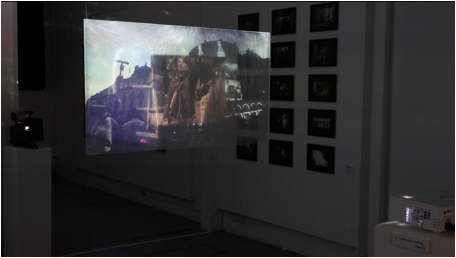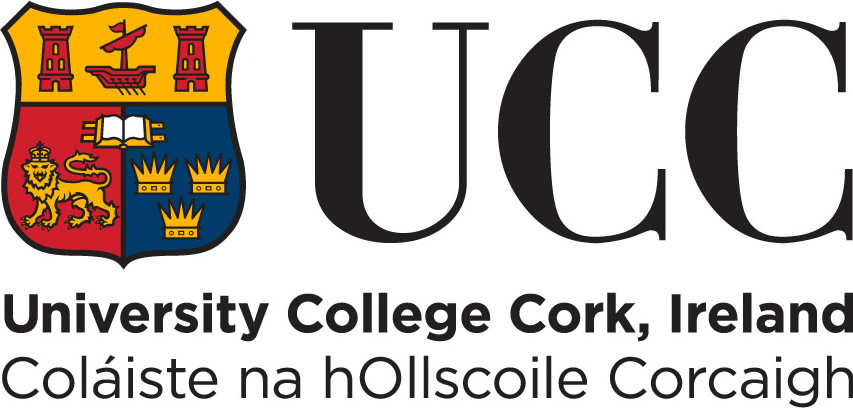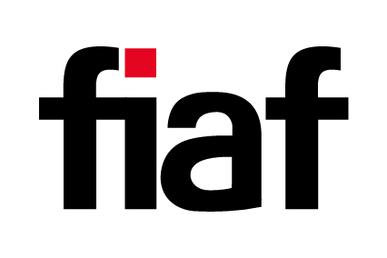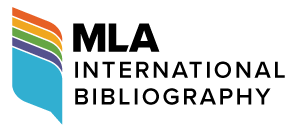Crossing the Boundary:
The Theory & Practice DossierDavide Abbatescianni and Dan O’Connell
Introduction
The following dossier responds to the burgeoning interest in the area of academic creative practice that is expanding rapidly within the field of film and screen media, evidenced by the spate of practice-led and practice-based degrees being introduced in universities across the world. Increasingly, it seems that practitioners feel the need to acquire a more comprehensive understanding of film and screen media artworks through film theory while theoreticians aim to gain new, more profound perspectives on the creative process and the technical knowledge preceding the realisation of the finalised artworks. These new modes and intersections between theory and practice have produced an innovative and complex set of methods, expressions and approaches that are widening the scope of research in the area of film and media studies and blurring the traditional boundary between theory and practice. While these explorations complicate the formulation of precise, well-honed questions and adequate study methodologies, they also contribute to the production of a more vibrant and diversified research landscape.
At the current moment, this pioneering research that bridges theory and practice is still at an embryonic stage, and while it offers great freedom in terms of experimentation and exploration, it must overcome the inherent difficulties associated with it. It is our belief that, within this still unstable framework, the reflective examination of specific case studies can offer a meaningful contribution to the debate on the evolving range of perspectives and methodological approaches, while giving account of researchers’ individual research questions and problem-solving processes. Accordingly, the following five papers, selected on the basis of the “hybrid” nature of the research they present, offer an excellent overview of each author’s unique study approach. Though a small cross-section of case studies, they provide an appreciable insight into the countless possibilities offered by the intersections of theory and practice, and raise questions that often have a broader import for the debate this issue of Alphaville addresses as a whole. Often, the authors clearly state a struggle to define the boundaries of their work and express sentiments of uncertainty during the research process. Nonetheless, their efforts have yielded fruitful outcomes, and we are delighted to share their findings.
The first paper, written by doctoral candidate Melanie Wilmink from York University of Toronto and entitled “Surface and Light: Thinking through Moving Images”, utilises case studies from her curatorial practice to discuss the balance between research and creation as well as to identify exhibition projects that centre the spectator within an embodied experience of the moving image. In this report, Wilmink treats the moving image as an experience, one capable of incorporating the space and time of the viewer’s body, and attempts to explore artworks as phenomenological tools through the creation of environments that stimulate the senses, where the viewer is invited to advance their knowledge and to experience the condition of “being with the artwork”.
Wilmink’s article is followed by the testimony of another creative practice doctoral student, Catherine Gough-Brady, who, while undertaking her research at Melbourne’s RMIT University, also produced and directed several televised documentary series aimed at young audiences. Playing to her strengths, as a creative practitioner with over twenty years of experience, Gough-Brady’s work utilises the audiovisual medium as her primary method of communication. In her “The Methodology Behind Digital Papers”, she describes the making of her project “Filming” (2017), which compiles the theoretical exploration typical of academic papers with the audiovisual form of documentary. This innovative “digital paper” has become an integral part of her doctoral practice and exploits her artwork as a method of what Ross Gibson terms “linguistic explication” (7). In her contribution, Gough-Brady adequately explains how the digital paper is located within her practice-based PhD and provides exciting insights into other emerging forms in academia, namely the video essay and the essay film.

Figure 1: Alex Nevill, video documentation, In Light of Moving Images,
Centrespace Gallery, Bristol, 4–6 November 2017. Screenshot.
Written by filmmaker and assistant professor Alexander Nevill from San Francisco State University, “Cinematography and Filmmaking Research: Reflections on a Practice-led Doctoral Process” provides a detailed overview of his practice-led doctoral research at the Digital Cultures Research Centre of the University of the West of England. Neville mainly focuses on lighting techniques used by cinematographers and other practitioners working with moving imagery and chooses to analyse three strands of enquiry in particular: scholarly activity, collaborative film production, and independent creative experimentation. The paper provides a thorough first-hand investigation into the lighting process while advancing current autoethnographic methods used to capture the “practical knowledge that is deployed in situ during moving image production” (188).
“Fake It ’Til You Make It and Other Mantras to Completing a Practice-led/-based/with PhD” by Laura O’Connor, formerly a PhD candidate at Ulster University, opens an interesting investigation regarding the blurred boundaries of practice-based and practice-led PhD programmes. In her paper, O’Connor discusses her personal struggle and experience as an artist and early-career researcher navigating the field of academia as well as the development of her practice-as-research model within her doctoral project. The intersection of her theoretical enquiry into new forms of online representation on the one hand, and, on the other hand, her practice in between social media and the gallery also presented problems of format and of interactive experience, which needed to be translated for the purposes of the doctoral examination.
Finally, in “Encountering the Invisible”Finnish award-winning documentary filmmaker and associate professor Susanna Helke from Helsinki’s Aalto University examines the potential of art-practice-led and research-in-the-arts methodologies and introduces the idea of the theory–praxis–poetics triangle as a process of catalysing new methods, expressions and approaches in filmmaking, especially in the field of documentary production. Her contribution tackles several questions related to the possible methods to make visible the invisible complexities of our present-day society, ethical dilemmas of contemporary “social documentary” and its modes of representation and the need to revalue documentary film practice as “a reflexive and critical endeavour beyond the emotion economy of the hegemonic film industries” (209). In a world ruled by polarisation and strong, uncontrollable reactions in both the virtual and real spheres of life, Helke points out the necessity to distinguish concepts such as the sentimental, emotional or compassionate, in order to re-establish the role of documentary in stimulating a reflexive political address.
Conceived to contribute to the debate on the burgeoning field of creative practice, this dossier is fittingly concluded by the podcast of a roundtable discussion. Moderated by issue editor Ciara Chambers, it was recorded at a symposium that took place at University College Cork on 4 May 2018, and that was the first stepping stone to this issue of Alphaville. With a particular focus on doctoral studies, Davide Abbatescianni, Jill Daniels, Alan Hook, Julian McDougall, Laura O’Connor and Romana Turina here debate questions of terminology, methodology, approach, execution, peer-review and assessment, thus offering precious insights from the points of view of the supervisor, the examiner and the candidate alike.
In conclusion, though the term “creative practice” may be seen as a new one in film and screen studies, often loaded with ambiguity and uncertainty, it is evident that much work has already been done to provide clarity to this emerging academic field. One must remember, however, that it was born out of a long history of appreciation, analysis and reflection of creative processes and practices, and that the creators of the past have reaped a more profound and more productive sense of creativity from the study of film and screen media. To a lesser extent, the merging of creative practice with critical and theoretical reflection has been happening for decades; the recognition of the practice in the world of academia has merely formalised it. And while much more work is needed to provide a deeper level of understanding of the exchanges between practitioners and theorists, this dossier is designed to provide an insight into a number of possible outcomes, as well as to foster a dialogue that is undoubtedly going to shape the future of our disciplines.
References
1. Gibson, Ross. “The Known World.” TEXT: Journal of Writing and Writing Courses, vol. 8, Special issue, Symposium: Creative and Practice-Led Research: Current Status, Future Plans, Oct. 2010, pp. 1–11, www.textjournal.com.au/speciss/issue8/Gibson.pdf. Accessed 11 June 2019.
2. Gough-Brady, Catherine. “Filming.” Screenworks, vol. 8, no. 1, 2018, 9:11 mins. screenworks.org.uk/archive/volume-8-1/filming.
3. Nevill, Alex. In Light of Moving Images. Exhibition. Centrespace Gallery, Bristol, 4–6 Nov. 2017.
Suggested Citation
Abbatescianni, Davide, and Dan O’Connell. “Crossing the Boundary: The Theory & Practice Dossier.” Introduction. Alphaville: Journal of Film and Screen Media, Crossing the Boundary: The Theory & Practice Dossier, no. 17, 2019, pp. 165–168. https://doi.org/10.33178/alpha.17.10.
Davide Abbatescianni is a PhD candidate in Film and Screen Media at University College Cork, where he holds an Excellence Doctoral Scholarship. His practice-based research project, supervised by Prof. Laura Rascaroli and Dr Barry Monahan, is entitled Temporality and Space in the Time of the Great Recession: A Focus on European Cinema. He holds a Professional Diploma in Stage Directing (International Theatre Academy of the Adriatic), a BA in Communication Studies (University of Bari Aldo Moro) and an MA in Documentary Film Directing (Tallinn University Baltic Film, Media, Arts, and Communication School). His research interests principally focus on European cinema, the European film industry, creative practice and the documentary film. He currently works as a foreign correspondent for the EU-funded film magazine Cineuropa. He is also a film practitioner active as a director and assistant director.
Dan O’Connell is Practitioner in Residence in the Department of Film and Screen Media at University College Cork. He has earned an MRes in Film and Screen Media, with a thesis titled Body Horror Revisted: A New Wave of Body Horror Films Directed by Women under the supervision of Dr Gwenda Young. He has recently collaborated with Dr Gwenda Young on a Creative Ireland/UCC funded project titled Movie Memories, which explored memories of cinemagoers in rural areas of Cork, Ireland. He has over twenty years of experience as a creative practitioner and is an award-winning filmmaker of short and feature length films and documentaries, which have been screened at film festivals both locally and internationally. He is a Director at SUPEREGO, a high-quality video production company with large multinational clients and a founding member of egomotion.net, an online filmmaking hub with over four hundred members, where filmmakers can share knowledge and resources and participate in each other's projects. Egomotion has also hosted various screenings, workshops and meet-and-greets in order to promote local filmmaking talent.









